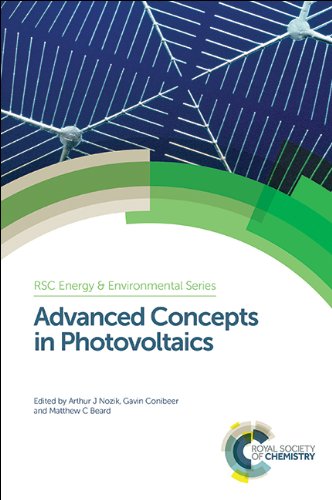

Most ebook files are in PDF format, so you can easily read them using various software such as Foxit Reader or directly on the Google Chrome browser.
Some ebook files are released by publishers in other formats such as .awz, .mobi, .epub, .fb2, etc. You may need to install specific software to read these formats on mobile/PC, such as Calibre.
Please read the tutorial at this link: https://ebookbell.com/faq
We offer FREE conversion to the popular formats you request; however, this may take some time. Therefore, right after payment, please email us, and we will try to provide the service as quickly as possible.
For some exceptional file formats or broken links (if any), please refrain from opening any disputes. Instead, email us first, and we will try to assist within a maximum of 6 hours.
EbookBell Team

0.0
0 reviewsPhotovoltaic systems enable the sun’s energy to be converted directly into electricity using semiconductor solar cells. The ultimate goal of photovoltaic research and development is to reduce the cost of solar power to reach or even become lower than the cost of electricity generated from fossil and nuclear fuels. The power conversion efficiency and the cost per unit area of the phototvoltaic system are critical factors that determine the cost of photovoltaic electricity. Until recently,the power conversion efficiency of single-junction photovoltaic cells has been limited to approximately 33% - the socalled Shockley-Queisser limit.
This book presents the latest developments in photovoltaics which seek to either reach or surpass the Shockley-Queisser limit, and to lower the cell cost per unit area. Progress toward this ultimate goal is presented for the three generations of photovoltaic cells: the 1st generation based on crystalline silicon semiconductors; the 2nd generation based on thin film silicon, compound semiconductors, amorphous silicon, and various mesoscopic structures; and the 3rd generation based on the unique properties of nanoscale materials, new inorganic and organic photoconversion materials, highly efficient multi-junction cells with low cost solar concentration, and novel photovoltaic processes.
The extent to which photovoltaic materials and processes can meet the expectations of efficient and cost effective solar energy conversion to electricity is discussed. Written by an international team of expert contributors, and with researchers in academia, national research laboratories, and industry in mind, this book is a comprehensive guide to recent progress in photovoltaics and essential for any library or laboratory in the field.